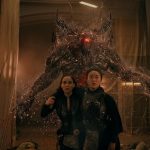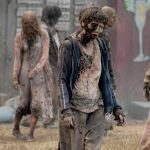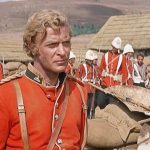”Hannibal (2001)”
- movieslovers
- November 19, 2024

Review of Hannibal (2001)
General Information
- Director: Ridley Scott
- Main Cast:
- Anthony Hopkins (Dr. Hannibal Lecter)
- Julianne Moore (Clarice Starling)
- Gary Oldman (Mason Verger)
- Ray Liotta (Paul Krendler)
- Frankie Faison (Barney)
- Genre: Crime, Thriller, Horror
- Runtime: 131 minutes
Plot
Hannibal is the sequel to The Silence of the Lambs (1991), continuing the story of the infamous cannibalistic serial killer Dr. Hannibal Lecter (Anthony Hopkins), who escaped custody at the end of the previous film. Now living in Italy, Lecter has assumed a new identity and continues his life in relative obscurity. However, FBI agent Clarice Starling (Julianne Moore) is still haunted by her encounter with Lecter and the unresolved connection between them.
Meanwhile, Mason Verger (Gary Oldman), one of Lecter’s former victims, is obsessed with seeking revenge against the doctor for disfiguring him. Verger, a wealthy and sadistic man, hires an array of people to track down Lecter, offering a large reward for his capture. Starling finds herself pulled back into Lecter’s world when she is assigned to the case, leading to a tense, psychological cat-and-mouse game between the two characters, with Starling grappling with her own moral dilemmas.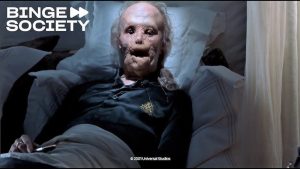
Highlights
- Anthony Hopkins as Dr. Hannibal Lecter
- Anthony Hopkins once again delivers a chilling, mesmerizing performance as Dr. Hannibal Lecter. His portrayal of the character remains one of the most iconic in film history, and he effortlessly blends charm, intelligence, and malevolence. Even in his relatively limited screen time, Hopkins’ presence looms over the film, embodying the character’s complex mix of elegance, cruelty, and genius.
- Julianne Moore as Clarice Starling
- Replacing Jodie Foster as Clarice Starling, Julianne Moore steps into the role with a more hardened and emotionally burdened version of the character. While Foster’s portrayal is often seen as definitive, Moore brings her own gravitas to the role, showcasing Starling’s resilience and vulnerability as she faces the moral and psychological challenges of her work.
- Intense and Unsettling Atmosphere
- Ridley Scott’s direction creates a dark, atmospheric world filled with psychological tension. The film moves between moments of quiet suspense and shocking violence, maintaining a sense of unease throughout. The contrast between Lecter’s cultured and refined demeanor and the grotesque violence of his actions creates an unsettling atmosphere that pervades the film.
- Gary Oldman as Mason Verger
- Gary Oldman’s portrayal of Mason Verger is one of the most disturbing and memorable elements of Hannibal. Verger is a grotesquely disfigured man consumed by hatred and a thirst for revenge against Lecter. Oldman’s performance is unsettling, and his makeup work, combined with his manic energy, makes Verger one of the most horrifying villains in the Hannibal series.
- Moral Complexity and Psychological Depth
- Hannibal delves deeper into the psychological dynamics between Starling and Lecter, particularly their twisted mutual fascination and respect. The moral gray areas of the characters’ choices are explored throughout, especially as Starling begins to cross ethical boundaries herself, leading to a complex interplay between duty, justice, and revenge.
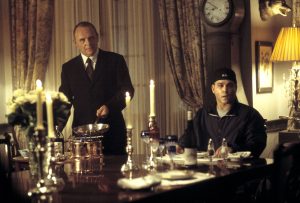
- Hannibal delves deeper into the psychological dynamics between Starling and Lecter, particularly their twisted mutual fascination and respect. The moral gray areas of the characters’ choices are explored throughout, especially as Starling begins to cross ethical boundaries herself, leading to a complex interplay between duty, justice, and revenge.
- Visuals and Cinematography
- Ridley Scott’s use of sumptuous, almost dreamlike cinematography adds a layer of elegance and surrealism to the film. The lush Italian settings, with their muted colors and chiaroscuro lighting, mirror the film’s exploration of the duality between beauty and horror. This juxtaposition enhances the tension, making the film as visually intriguing as it is disturbing.
Criticisms
- Pacing Issues
- While Hannibal has moments of intense suspense, some viewers may find the pacing uneven, particularly in the middle of the film. The plot often feels meandering, with certain scenes and character moments dragging before the tension picks up again, especially with the subplots involving Verger’s revenge.
- Violence and Shock Value
- The film’s graphic violence, particularly the infamous scene involving Ray Liotta’s character, Paul Krendler, may be off-putting for some viewers. While it adds to the shock factor, the extreme nature of some scenes, though visually striking, feels excessive at times, detracting from the film’s otherwise cerebral nature.
- Weaker Connection to The Silence of the Lambs
- While Hannibal is a direct continuation of the Silence of the Lambs story, the shift in tone and focus from psychological thriller to more overt horror and violence may feel disjointed for fans of the original film. The dynamic between Starling and Lecter, while still central, isn’t as finely drawn in terms of character development, leading to a less satisfying emotional payoff compared to the first film.
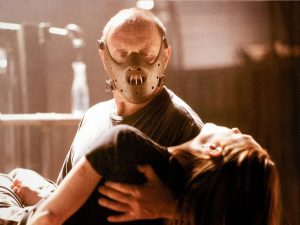
- While Hannibal is a direct continuation of the Silence of the Lambs story, the shift in tone and focus from psychological thriller to more overt horror and violence may feel disjointed for fans of the original film. The dynamic between Starling and Lecter, while still central, isn’t as finely drawn in terms of character development, leading to a less satisfying emotional payoff compared to the first film.
Verdict
Hannibal (2001) is a chilling, visually stunning psychological thriller that builds on the legacy of The Silence of the Lambs. Anthony Hopkins’ portrayal of Dr. Lecter remains a standout, and Ridley Scott’s direction creates a rich, unsettling atmosphere. However, the film’s graphic violence, uneven pacing, and shift in tone from its predecessor may not appeal to all viewers. Despite these criticisms, Hannibal is a gripping and intense continuation of the story that explores the darker aspects of human nature and obsession.
Rating: 8.5/10







